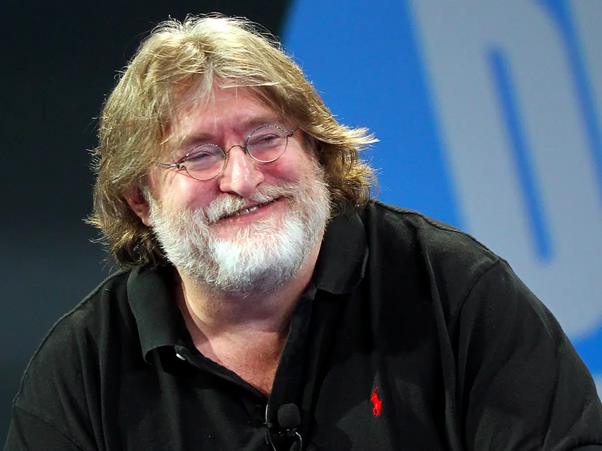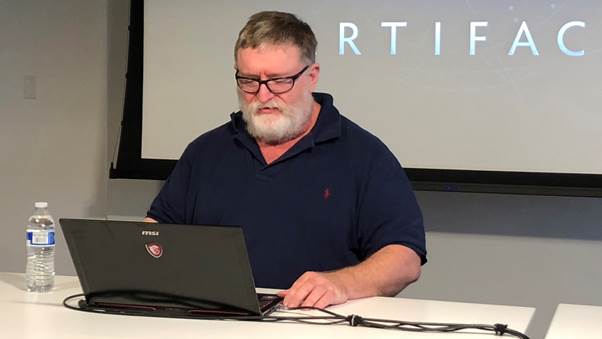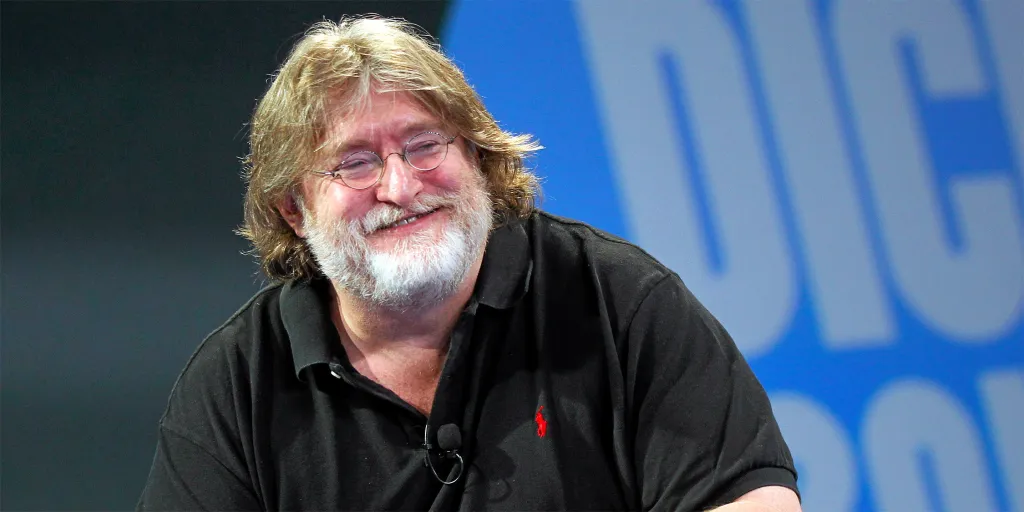In the world of technology and entertainment, billionaires are often household names—Zuckerberg, Musk, Bezos. But in the vast and passionate universe of PC gaming, there is one name that inspires a unique level of reverence and a countless number of internet memes: Gabe Newell. Affectionately known as “Gaben” by his global fanbase, the co-founder and president of Valve Corporation is one of the most influential figures in video game history.
With a staggering net worth estimated at $6 Billion, Gabe Newell is not just a successful CEO; he is a digital emperor who fundamentally reshaped how games are made, sold, and played. Unlike many of his tech billionaire peers whose fortunes are tied to the fluctuating whims of the stock market, Newell’s wealth is built on the bedrock of a privately owned company that he controls. This immense fortune was not the result of a single viral app or a lucky investment. It was meticulously engineered over decades through groundbreaking game development and, most importantly, the creation of Steam, the world’s undisputed king of digital game distribution.
This is the story of how a Harvard dropout and a “Microsoft Millionaire” built a private empire, a loyal community, and a multi-billion-dollar net worth, all without ever taking his company public.

From Microsoft Millionaire to Video Game Visionary
The path to becoming a gaming icon began not in a game studio, but within the corporate halls of Microsoft. After dropping out of Harvard University in the early 1980s, Gabe Newell spent 13 years as an employee, working as a producer on the early versions of the Windows operating system. He described himself as “Producer on the first three releases of Windows,” a role that placed him at the heart of the personal computer revolution. His time at Microsoft was incredibly lucrative, and like many early employees, he became a “Microsoft Millionaire” from his stock options.
However, after seeing other colleagues leave Microsoft to follow their passions, Newell was inspired. He, along with fellow Microsoft employee Mike Harrington, saw the untapped potential of video games as an entertainment medium. In 1996, they made a life-altering decision: they left the security of Microsoft, pooled their own personal fortunes, and founded a video game company they named Valve.
Their first project was ambitious and fraught with risk. They set out to create a story-driven, first-person shooter that would push the boundaries of technology and narrative. After licensing the Quake engine and heavily modifying it, Valve released its debut title in 1998: Half-Life. The game was a monumental success, a cultural phenomenon that won over 50 “Game of the Year” awards. It was praised for its immersive storytelling, intelligent enemy AI, and seamless world-building. Half-Life didn’t just sell millions of copies; it put Valve on the map as a studio synonymous with quality and innovation. This initial success provided the capital and the credibility for everything that was to come.
The Masterstroke: Forging the Steam Platform
While Valve continued to develop hit games, including iconic titles born from Half-Life mods like Counter-Strike and Team Fortress, Gabe Newell’s most revolutionary idea was born out of a practical problem: how to efficiently update their games and stop cheaters. In the early 2000s, patching online games was a clumsy process. The solution was Steam.
Initially launched in 2003, Steam was a simple software client designed to automatically deliver updates for Valve’s own games. The gaming community was skeptical at first, viewing it as an unnecessary requirement. But Newell had a much grander vision. He saw Steam not just as an updater, but as a digital storefront—a place where players could buy, download, and manage their entire PC game library.
This was a game-changer. Steam effectively created the modern digital distribution market for PC gaming, cutting out the need for brick-and-mortar stores, physical boxes, and discs. It offered convenience for players and provided a direct-to-market platform for developers. This platform would become the unshakeable foundation of Newell’s multi-billion-dollar fortune.
Steam’s business model is brilliantly simple and incredibly lucrative:
- Commission on Sales: For every game, expansion pack, or piece of downloadable content sold on the platform, Valve takes a commission. This cut is traditionally 30%, though it can be reduced for games that earn exceptionally high revenue.
- Massive Scale: Steam is the dominant force in PC gaming, controlling an estimated 75% of the digital distribution market. It boasts over 120 million monthly active users and a library of over 50,000 games.
When you consider the sheer volume of transactions happening every second on a platform of this size, it becomes clear how Valve generates billions of dollars in revenue annually. And as the majority owner of this private entity, Gabe Newell is the primary beneficiary.
Deconstructing the $6 Billion: The Power of Private Ownership
So, how do we arrive at a $6 billion net worth for a man who runs a private company that doesn’t publish its financial reports? The valuation is based on well-informed estimates from financial analysts and publications like Forbes, who break it down as follows:
- Valve’s Company Valuation: Financial experts estimate the total value of Valve Corporation to be anywhere from $10 billion to $15 billion. This valuation is based on its annual revenue (estimated to be several billion dollars), its complete dominance of the PC gaming market, its valuable intellectual properties (Half-Life, Counter-Strike, Dota, Portal), and its successful hardware ventures like the Steam Deck.
- Newell’s Ownership Stake: The most critical factor in his net worth is that Gabe Newell is reported to own over 50% of Valve.
- The Simple Math: Taking a conservative approach, 50% of a $12 billion company valuation instantly places Gabe Newell’s personal net worth at $6 billion.
Furthermore, Valve has other immense revenue streams beyond just taking a cut of third-party sales. The company operates the in-game item markets for its own blockbuster titles like Counter-Strike: Global Offensive and Dota 2. The trade of virtual items like weapon “skins” and character cosmetics is a multi-billion dollar micro-economy, and Valve takes a small percentage of every single transaction. This alone generates hundreds of millions of dollars in near-pure profit each year.

Conclusion: The Quiet Emperor of a Digital World
Gabe Newell’s $6 billion fortune is a testament to a unique business philosophy. By keeping Valve private, he has avoided the demands of shareholders and the pressure of quarterly earnings reports, allowing his company to operate on its own terms—a philosophy famously outlined in its “Handbook for New Employees.” This freedom has allowed Valve to take long-term risks, focus on quality over quantity, and build a platform that has become an essential part of modern culture.
His wealth wasn’t built by selling out or cashing in. It was built by creating timeless games and, more importantly, by building the digital infrastructure upon which an entire industry now operates. He is the quiet landlord of PC gaming, the architect of a digital empire, and his immense net worth is simply the consequence of creating indispensable value for millions of gamers and developers around the globe.

